Every now and again a model comes along which moves its brand forward in a big way.
In Kia’s case we were all wondering when it was going to happen. The brand’s current design language has been such a success, and its broad range has been gradually updated well in the last few years.
Then, along came this car, the new Kia Sorento. It has been totally re-designed in and out, with new technology, aesthetics, and underpinnings.
It’s sorely needed. The Sorento has gone from the oldest looking product in the brand's range, to the most futuristic.
But is it a better car? I took the base S for a week to find out.
Kia Sorento 2021: S 7 Seat
| Engine Type | Diesel Turbo 4, 2.2L |
|---|---|
| Fuel Type | Diesel |
| Fuel Efficiency | 6.1L/100km (combined) |
| Seating | 7 |
| Price From | $37,950 - $44,660 |
| Safety Rating |
|
Does it represent good value for the price? What features does it come with?
8 / 10
The car we’re testing here is the absolute base model S in diesel all-wheel drive form, wearing a before-on-road pricetag of bang-on $49,990 (before on-road costs).
We’ll put this in context with some rivals. These include the Mazda CX-9 Sport (2.5 turbo petrol AWD - $49,920), Nissan Pathfinder ST+ (3.5L petrol V6 AWD - $48,840), and Toyota Kluger GX (3.5L petrol V6 AWD - $48,850).
.jpg)
Interestingly diesel options amongst these larger non-ladder-based SUVs are becoming rarer, so it’s refreshing the Sorento is offered with the proven 2.2-litre four-cylinder turbo diesel. It’s the only all-wheel drive option though, so you’ll be stuck with a front-drive petrol V6 otherwise.
Even this base car impresses with its design, both from the outside and inside (more on this in the next section) and has good levels of standard equipment but if you look a little closer it still misses out on a few small items which might get on your nerves.
The good stuff includes a 8.0-inch multimedia touchscreen with Apple CarPlay and Android Auto connectivity (once would have looked big, but in today’s era and with this car’s design, looks a bit small), LED headlights, foglights and rear lights, 17-inch alloy wheels, 4.2-inch multifunction display, front and rear parking sensors, a reversing camera, a leatherbound wheel, and a total of four USB ports for passengers.
Lower-end features include a lack of keyless entry and push-start (meaning a dorky turn-key ignition – odd for such a swish-looking product), cloth seat trim, an analogue dash cluster (higher variants get a fully digital screen), and manual air conditioning controls.
Still, despite some notable spec omissions (and what do you expect, this car is the most basic S) the Sorento looks almost every bit as good as any other variant in the range from the outside.
It’s also worth noting the standard safety suite is very impressive, helping to add to this car’s value.
Is there anything interesting about its design?
9 / 10
This car is all design. I knew it would look good from the pictures, but being up close only made me like it more. The design is truly stunning, and even this base car looks the part, only giving a hint at its more affordable status with the smallish alloy wheels.
.jpg)
The front is dominated by the contoured and finely textured piano black grille, working its way nicely into the LED light clusters and tough cascading lower bumper stance.
The side profile is more masculine than before and is rounded out at the back with those premium look segmented LED light clusters.
_0.jpg)
The rear is toughened out by the square finishes and the way the lower bumper elements flick up, while the roof spoiler juts out for a sporty and capable look. The whole package adds up for something which is elegant and tough in almost equal measure. Not as dainty as a CX-9, but not as rugged as a Prado. I like this new look from Kia.
Inside will take you aback as well. While we’ve come to expect certain motifs from Kia interiors, the Sorento proves the brand has moved on by flipping it on its head. The colour scheme and some of the patterns used here are reminiscent of current and previous generation cars from the Korean giant, but the layered dash design, all-new centre console treatment, primo wheel and multimedia elements add up for something which feels truly beyond anything the brand has done before.
While this base car misses out on high end features like leather seats, larger screens and fully digital elements, nothing feels out of place at all. Even this S variant is adorned with soft touchpoints throughout, and the screen and basic air-conditioning controls don’t lessen the cabin ambiance.
.jpg)
The abundance of varied textures, new signature fishscale pattern elements, comfortable seat trims, and deep-set seating position make the cabin a lavish and dare-I-say-for-a-base-model, luxurious, place to be.

How practical is the space inside?
9 / 10
From the moment you hop in its clear the Sorento has a huge and practical cabin. Most cars do in this segment, but Kia has always paid special attention to giving the driver and passengers plenty of space and storage options.
.jpg)
To start with, the driver’s seat offers great levels of adjustability, and importantly allows you to sit very high or very low depending on your preference. From there, the Sorento’s cabin has tactically placed leather-bound soft touch points for elbows and arms, and the brand’s usual modus operandi of a hard dash topper is even replaced with a padded surface.
Ergonomics are fantastic too, with the screen placed at just the right distance, accompanied by easy-use toggles and switches for volume, tuning, and air-conditioning adjustment.
There are huge door bins for front passengers, with large cupholders, a voluminous centre console box and a storage bay under the air conditioning controls which oddly has one of those flip covers reminiscent of cars from the mid ‘00s.
The back seat truly demonstrates the scale of the new Sorento. Huge door apertures open to absurd amounts of legroom, with wide seats on rails. The overall finish does start to get a bit plasticky in the rear, with less textures and soft-touch points on the doors, and the backs of the front seats have ordinary-looking plastic cladding on them. Good for the rough nature of kids, I suppose, but then they’ll deserve a medal for being able to reach the front seats in the first place.
.jpg)
Amenity-wise there are full size variable bottle holders in the door trims (very cool), a binnacle further down on the doors, pockets on the backs of the front seats, dual adjustable air vents, a USB port, and a 12-volt power outlet.
All the extra room for second row passengers also grants you plenty of adjustability for third-row occupants. The second row is able to be moved so far forward (and leave sufficient space) which even adults will be humanely treated sitting in the very back.
.jpg)
To add to the practicality of this space further there are large cupholders and binnacles for each third-row occupant, a single 12-volt outlet (but no USB ports) and even underfloor ventilation (but no adjustable air vents or controls which are available on higher grades). Third row occupants also have easy access to quick release buttons atop the shoulders of the second-row seats for easier entry and egress, but it is worth pointing out here there are no third-row curtain airbags.
.jpg)
The boot also benefits from quick release toggles and Velcro belts for the stowing or erecting of the third row. Space with the third row up is a somewhat useful 187 litres (for duffle bags and the like), but with the third row stowed is a gigantic 616 litres (VDA). For context this is twice what you might expect in a hatchback and will even fit two of our largest 124L CarsGuide travel cases side-by side lengthways. Impressive.
.jpg)
All Sorentos have towing capacities of 750kg unbraked or 2000kg braked. There is a full-size alloy spare (big win for long-distance country drivers) under the boot floor.
What are the key stats for the engine and transmission?
8 / 10
The Sorento is the first car in Australia to feature Kia’s new and improved 2.2-litre four-cylinder turbo diesel engine. This one forgoes the old technology of the previous unit, cutting 19.5kg from the weight by employing an aluminium rather than cast-iron block.
This engine’s outputs have increased to a healthy 148kW/440Nm notably matching Mazda’s 2.2-litre turbo diesel (as found in the CX-8, which produces 140kW/450Nm).
The engine also comes with a new eight-speed dual clutch automatic transmission in an attempt to curtail fuel consumption. More on this in the fuel consumption and driving sections.
.jpg)
How much fuel does it consume?
8 / 10
Kia says the new engine and transmission will make for “a 15 per cent reduction” in fuel consumption. The official figure is an impressive-sounding 6.1L/100km and my Sorento was returning a dash-reported figure of 7.2L/100km over mixed driving conditions. I was fully expecting 8.0L/100km or more so this is a clear win, especially over its thirsty petrol V6 version.
The Sorento has a 67-litre fuel tank (for a theoretical range of over 1000km for this diesel version) and is said to emit 193g/km of CO2 to the Euro 5 emissions standard.
_0.jpg)
Warranty & Safety Rating
What safety equipment is fitted? What safety rating?
9 / 10
Even the base Sorento scores most of the available active safety suite which is impressive stuff. Standard is auto emergency braking (AEB) with pedestrian, cyclist, and oncoming junction detection, lane keep assist with lane departure warning, driver attention alert, rear cross traffic alert with blind spot collision assist (but oddly no blind spot monitoring…), safe exit assist, high-beam assist and adaptive cruise control.
It’s a lot of gear, though it seems arbitrary blind spot monitoring has been removed given all the required sensors seem to be in place. The Sorento also scores front and rear parking sensors with a good-quality reversing camera.
Also included is the expected suite of electronic stability, brake, and traction controls, and the Sorento has a total of five top tether and four ISOFIX child-seat mounting points across its rear rows.
Finally, this SUV also scores seven airbags, introducing a front centre airbag. As already mentioned though, the dual curtain airbags do not extend to the third row.
The new-generation Sorento is yet to be rated by ANCAP.
What does it cost to own? What warranty is offered?
9 / 10
Kia’s omnipresent seven-year warranty has kept competitors on edge for years, although some are beginning to catch up. For the time being though, the Sorento can only count the Mitsubishi Outlander as a real competitor in the seven-seat SUV stakes with its new conditional 10-year warranty promise.
Ownership costs are kept under control by a capped price service program which lasts the life of the warranty, with each yearly 15,000km visit costing between $335 and $729. It works out to an average per year of $494.71. Not the cheapest we’ve ever seen but also not bad for something this size with a diesel engine. In the context of Kia’s range, it’s not even much more expensive than even relatively mechanically simple models like the Picanto.
.jpg)
What's it like to drive?
8 / 10
The Sorento is as lovely to drive as it is to sit in. I described it to others as a moving Korean luxury lounge. The low seating position gives you a feel of being nestled deep in this car’s interior, and the excellent touch points really elevate the comfort on offer for long distance cruising.
I would argue the comfort tune is the correct priority here for a family hauler. It’s not dynamically bad, tilting gently into corners, but the jiggle makes it imperfect on gravel roads or heavily corrugated tarmac.
Making an SUV this big feel easy to drive in the suburbs is no mean feat though, so I must award Kia full points there. It does feel every bit as wide as it is though, so don’t expect to be darting around like you would in even a lighter mid-sizer.
It’s a breeze on the freeway too, with the standard adaptive cruise control, less zany lane keep features from previous-generation products, and comfortable steering making this a easy long-distance tourer which I’d be more than happy in for hours at a time.
.jpg)
The overall experience is one of refinement though. I love the way this new Sorento drives, it doesn’t try to be anything it isn’t and is a clear step into the future of large SUV drivability and comfort when lined up against something like the Toyota Kluger. Segment refinement hero, the CX-9, will now have a true rival on its hands.
Verdict
The Sorento badge has gone from being the oldest looking and feeling Kia product to stepping the whole brand into the future.
You won’t feel short-changed getting into this base S, and its comfort, practicality, and vastly improved refinement will no doubt make it a family favourite for years to come.
Pricing Guides



.jpg)

.jpg)
.jpg)
.jpg)



















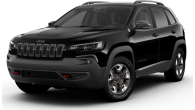
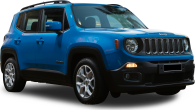














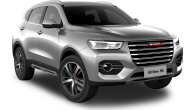





 copy.png)

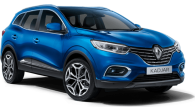




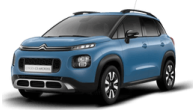






.jpg)


_0.jpg)


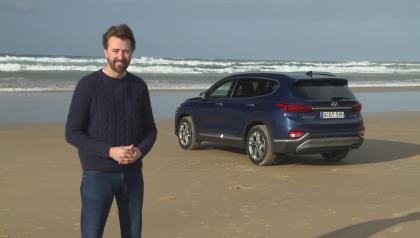
.jpg)

.jpg)


Comments